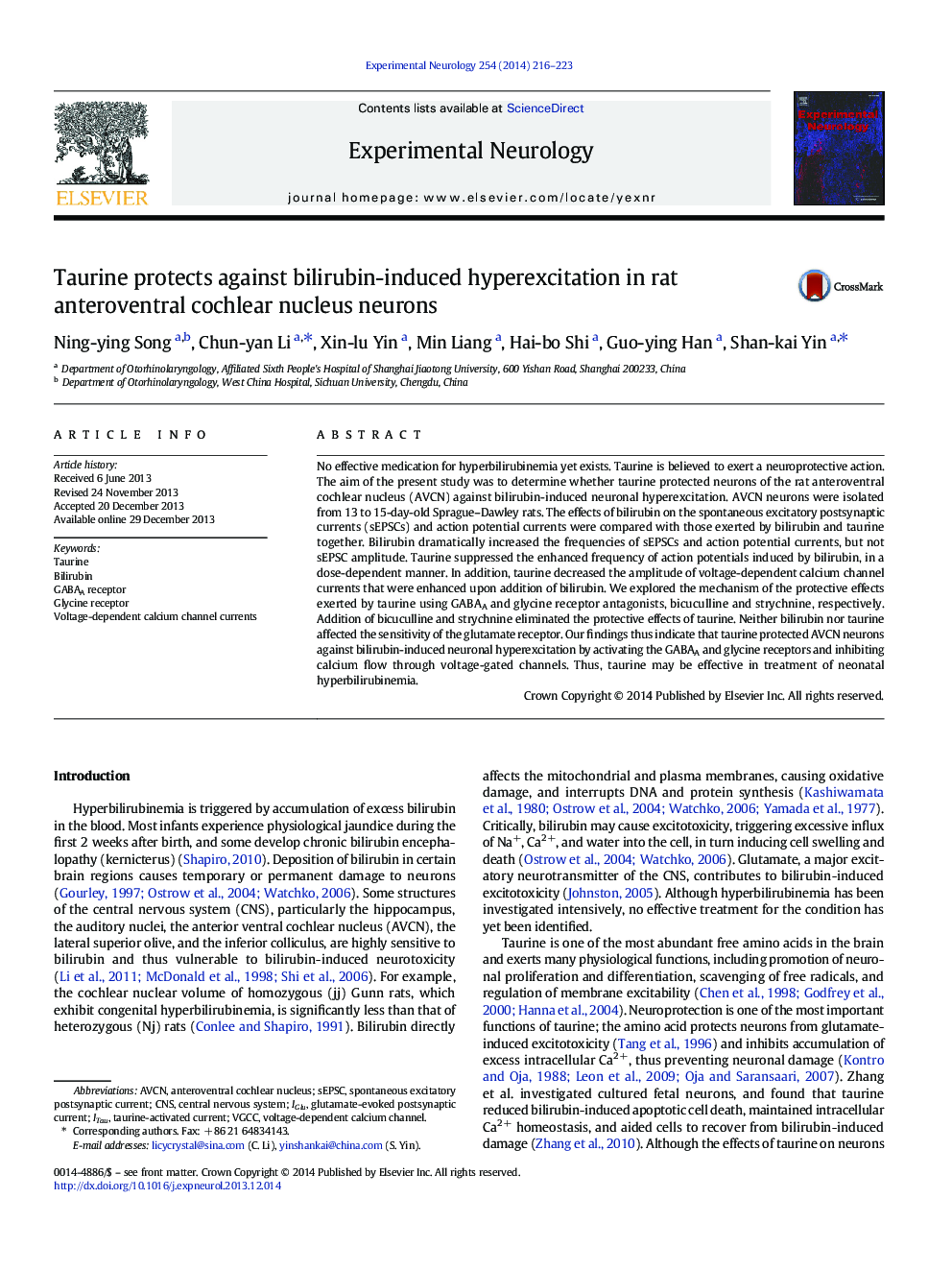| Article ID | Journal | Published Year | Pages | File Type |
|---|---|---|---|---|
| 6017887 | Experimental Neurology | 2014 | 8 Pages |
â¢Taurine protected ANCN neurons against bilirubin-induced hyperexcitation.â¢Protection by taurine was inhibited by antagonists of the GABAA and glycine receptors.â¢Neither bilirubin nor taurine affected the sensitivity of the postsynaptic glutamate receptor.â¢Taurine decreased the amplitude of voltage-dependent bilirubin-enhanced calcium channel currents.â¢Taurine may potentially be used to treat hyperbilirubinemia-induced neuronal excitotoxicity.
No effective medication for hyperbilirubinemia yet exists. Taurine is believed to exert a neuroprotective action. The aim of the present study was to determine whether taurine protected neurons of the rat anteroventral cochlear nucleus (AVCN) against bilirubin-induced neuronal hyperexcitation. AVCN neurons were isolated from 13 to 15-day-old Sprague-Dawley rats. The effects of bilirubin on the spontaneous excitatory postsynaptic currents (sEPSCs) and action potential currents were compared with those exerted by bilirubin and taurine together. Bilirubin dramatically increased the frequencies of sEPSCs and action potential currents, but not sEPSC amplitude. Taurine suppressed the enhanced frequency of action potentials induced by bilirubin, in a dose-dependent manner. In addition, taurine decreased the amplitude of voltage-dependent calcium channel currents that were enhanced upon addition of bilirubin. We explored the mechanism of the protective effects exerted by taurine using GABAA and glycine receptor antagonists, bicuculline and strychnine, respectively. Addition of bicuculline and strychnine eliminated the protective effects of taurine. Neither bilirubin nor taurine affected the sensitivity of the glutamate receptor. Our findings thus indicate that taurine protected AVCN neurons against bilirubin-induced neuronal hyperexcitation by activating the GABAA and glycine receptors and inhibiting calcium flow through voltage-gated channels. Thus, taurine may be effective in treatment of neonatal hyperbilirubinemia.
